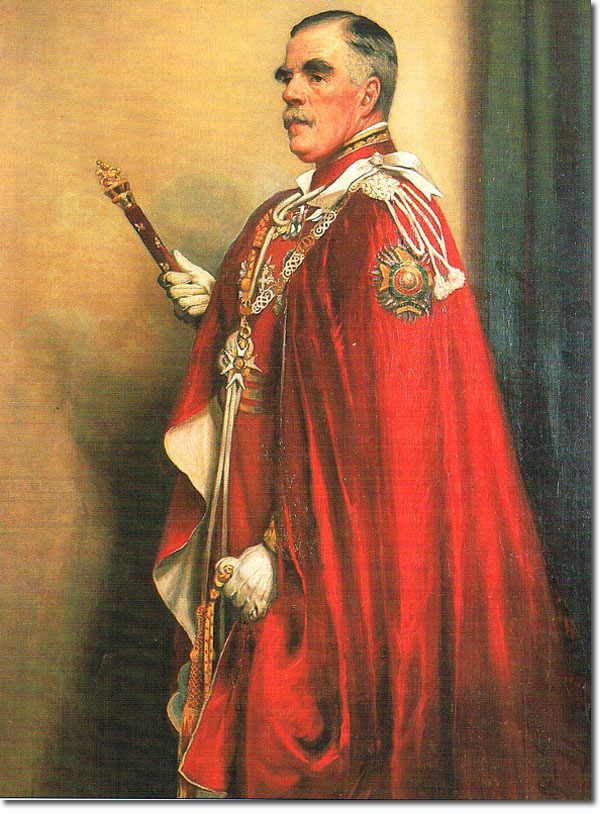|
|


|
|
Sir William Robertson was the first and only soldier in the British Army to rise from Private to Field Marshal. He was born in Lincolnshire on 29 Jan 1860, the son of Thomas Charles Robertson, a tailor and postmaster from Scotland. His first job was as a footman at Deene Park in the Countess of Cardigan's household. He joined the army at the age of 17 in Nov 1877, enlisting in the 16th Lancers. He reached the rank of sergeant in Jan 1882, and because he was well educated he was encouraged to take an exam for a commission. He passed and became a 2nd Lieutenant in the 3rd Dragoon Guards on 27 June 1888. He was one of only 5 other ranks to be commission that year. Cavalry officers normally had private incomes to supplement their pay. Luckily the 3rd DG were in India and his pay was higher, and his expenses lower than they would have been in the UK. His father made up his uniforms and he avoided drink and cigars. He also learned six local languages and earned money as an interpreter.
He won the DSO for an incident when on reconnaissance just after the Chitral Relief Expedition in 1895 with the rank of captain. He was attacked by his two guides who took advantage of Robertson's weakness from dysentery. One fired a shotgun at him and missed, the other came at him with a sword. Robertson punched him to the ground and pulled out his revolver. One guide was wounded, the other was later captured and executed. He married Mildred Palin the daughter of Lt-General Charles Thomas Palin of the Indian Army. Her family disapproved of the match. Their first child died in infancy but they had four more children, 2 daughters and 2 sons, one of whom, John, died in 1928 five years before Sir William. The elder son, Brian became General Lord Robertson of Oakridge in 1961. Sir William Robertson was Chief of the Imperial General Staff from 1916 to 1918 but during his career he had hardly ever commanded troops in the field. His command of the army during World War One was criticised for his failure to visit the men on the battlefields of the Western Front. He had a bad relationship with Lloyd George, and an awkward relationship with Haig who couldn't overcome his snobbishness. He concentrated on the war in Europe and saw little value in Mesopotamia and other theatres of war. He was a blunt man, not affecting an accent to hide his humble background, and as he approached later life, became more bad-tempered. He died on 12 Feb 1933. The portrait, painted in 1921 by John Lander, depicts him in the robes of a Knight Grand Cross of the Order of the Bath to which he was appointed on 24 Jan 1917. He was Colonel of three regiments:
The Royal Scots Greys 9 Mar 1916 - 4 Sep 1925 |
Armed Forces | Art and Culture | Articles | Biographies | Colonies | Discussion | Glossary | Home | Library | Links | Map Room | Sources and Media | Science and Technology | Search | Student Zone | Timelines | TV & Film | Wargames